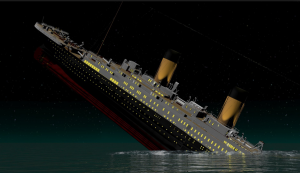 The days of simply having ideas moving through a pipeline and coming out the other end as finished product and services seems part of our great past.
The days of simply having ideas moving through a pipeline and coming out the other end as finished product and services seems part of our great past.
I believe Innovation is becoming overwhelmed by all the changes we are applying into innovation activity and its management.
I would say the IM system is under even greater strain from the shifts coming from the multiple applications of technology, new approaches to design and modelling as well as all the necessary engagement and touchpoints.
Yet we are still expecting this deluge of change occurring to happily move our innovations through that past established, often manual processes, we have presently in place. I think not. We are deluding ourselves, that all is well.
There are such changes occurring.
There is an increasing need for ecosystems, platforms, the greater use of analytics, big data and reliance on technology are all crowding in on innovation delivery.
The emphasis on thinking through new business models, combining design thinking, lean management, customer development, prototyping, experimenting outside the lab, collaborating with clients, finding different partners, the different exploitation of research techniques, are all breaking out in different forms and combinations, radically altering our approaches to innovation.
Also collaborating and networking are far more essential to innovation exchange, be this in the early idea forming stages but increasing in the development and execution of innovative solutions.
Partnerships are diverse, delivering on the need of the job-to-be-done. Orchestration is increasingly playing its part to manage all the assets and knowledge coming into play. There is a significant amount of change occurring around innovation and its management.
I have suggested in past posts that we all need to think differently, to act differently, to treat innovation differently:
innovation is based on the thinking around the shift from products to solutions, from transactions to growing far more value-adding ongoing relationships, from a supplier of product services, into highly valued network partnerships, exploring innovation across all options, instead of delivering on discrete elements; this requires managing the whole ecosystem of the innovation design differently.
Can we continue in this “steady as she goes” by simply rearranging in this case the innovation portfolio to adjust to the latest insight, well no. I think we are simply just fiddling with the deckchairs, incremental changes as the innovation ‘ship’ plows on, into more treacherous water, underestimating the hidden icebergs that cannot be appreciated until something happens.
Overload, inadequate resources, systems and structures all lie under the surface but still, we press on regardless.
Innovation is heading for its own Titanic moment.
Are we addressing all the significant changes going around innovation?
It seems incredible to us today that anyone could believe that 70,000 tonnes of steel could be unsinkable.
Yet, when the New York office of the White Star Line was informed that Titanic was in trouble, White Star Line Vice President P.A.S. Franklin announced ” We place absolute confidence in the Titanic. We believe the boat is unsinkable.”
I can hear the CEO of today making a similar comment “We place a lot of confidence in our innovation, it is critical in the way we will grow our business and take us forward, we are well-positioned to grow” I don’t share their (blind) faith.
Looking back, it was the beginning of the twentieth century and people had absolute faith in new science and technology. They believed that science in the twentieth century could and would provide answers to solve all problems.
The sinking of the ‘unsinkable’ Titanic shattered much confidence in science and made people more skeptical about such fantastic claims.
Does innovation sink under the weight of so much expectation
Are we going to sink innovation as the twenty-first century takes our beliefs in technology and science into new areas, without the necessary understanding of how to manage this, when so much of our understandings of how to physically manage this, are lagging?
I feel we can go on foolishly believing innovation will simply cope with all that is coming towards her?
It is perhaps “unthinkable” for most, our innovation will simply cope. Why not, I mean we have the technology and the internet to keep us caught up in the moment. Yet we are falling further behind on the people side of managing innovation and balancing risk and reward. Our processes, systems and structures are inadequate to deliver on the expected innovation promise.
Is the internet and our growing reliance on all our connections required for managing today’s business for innovation insights, services and understanding, we just might not be seeing the size of the ‘hidden’ icebergs?
Unless we change course and plot a new route for managing innovation we might have some very uncomfortable moments where we will simply sink, flounder or await rescue. Who is actually steaming to the rescue of our ‘creaking’ innovation systems?
*first published on LinkedIn